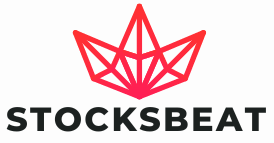How-To Guide: Making Solar Energy Affordable
As concerns about climate change continue to grow, more individuals and governments are turning towards renewable energy sources like solar power. However, the cost of installing solar panels can be prohibitive for many. Fortunately, there are several strategies and innovations aimed at making solar energy much more affordable for the average consumer.
This blog post explores practical steps homeowners can adopt to reduce costs and even profit from going solar. We will discuss various incentives, financing options, technological advancements, smart solar shopping, and long-term saving tactics. Embracing these approaches could significantly lessen the financial burden and make sustainable energy accessible to a broader audience.
Government Incentives and Rebates
One of the most effective ways to reduce the upfront cost of solar installations is through government incentives and rebates. These financial supports can come from federal, state, or local governments and significantly lower the initial investment required for solar panels. For more detailed information on how these incentives work and how you can benefit from them, visit https://ecofriend.com/home-solar-incentives-how-to-make-solar-energy-more-affordable.html.
For instance, in the United States, homeowners who install solar panels are eligible for the Solar Investment Tax Credit (ITC), which allows them to deduct 26% of the cost of installing a solar energy system from their federal taxes. Additionally, many states offer additional tax breaks and cash rebates that can further reduce costs.
Innovative Financing Options
For those worried about the initial outlay, there are several innovative financing options available that can make solar panels affordable. Solar leases and power purchase agreements (PPAs) allow homeowners to rent equipment or agree to buy the power generated by the panels at a fixed rate that is typically lower than the local utility rate. This reduces or completely eliminates upfront costs while providing a predictable electricity costing.
Alternatively, many companies now offer solar loans which function similarly to home improvement loans but are tailored specifically for installing photovoltaic systems. These loans often have very competitive interest rates and can be paid back over time as savings accrue from reduced utility bills.
Technological Advances Lowering Costs
The cost of solar technology has dropped dramatically over the last decade due to improvements in technology and manufacturing processes. Advances in photovoltaic materials have not only made solar panels cheaper but also more efficient at converting sunlight into electricity.
Emerging technologies such as bifacial panels, which collect sunlight from both sides, and PERC (Passivated Emitter Rear Contact) technology also improve efficiency rates. These developments lead to higher energy production and faster return on investment for consumers.
Smart Shopping: Choosing the Right System
Selecting the right solar system is crucial for maximizing cost-effectiveness. It’s important for homeowners to conduct adequate research before deciding on what size, type of panels, and installation company to choose. Seeking multiple quotes and understanding product warranties can ensure that you are not only getting a competitive price but also trusted service.
Consider factors such as panel ratings, inverter efficiency, and company reputations. It’s equally vital to assess whether your geographical location gets enough sunlight to justify installation costs or if there are any shade issues that might block sunlight from reaching your rooftop.
Maximizing Long-term Savings
To maximize savings once your solar system is installed, consider integrating smart energy solutions like battery storage systems which can store excess power during peak production times for use during low production hours. Combining solar panels with energy-efficient appliances around your home can also help slash bills significantly.
Frequent maintenance checks will ensure your installation functions optimally thereby benefitting from longevity which translates into enhanced savings over time as the system continues to pay off its cost year over year.
In conclusion, while the upfront costs of solar energy might seem daunting at first glance, plentiful options exist that make it not just viable but economically beneficial for homeowners in the long run. By taking advantage of government schemes, choosing appropriate financing options, investing in latest technologies, making informed purchasing decisions, and ensuring efficient utilization of generated power; homeowners can enjoy significant reductions in overall expenditure on electricity.
The journey to adopting solar energy represents an investment not only in your home’s value but also in our collective future by committing to sustainable practices. Tapping into these opportunities makes economic sense now more than ever.<\p>
